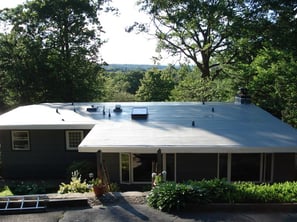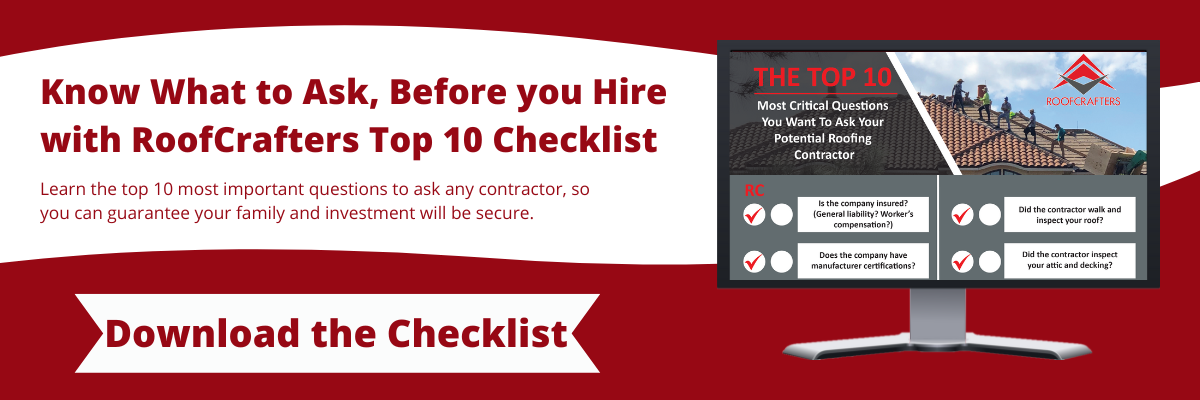Choosing the Right Roofing Material: A Guide for Steep Slope and Low Slope Roofs
January , 2024 | 12 min. read
By Mitch Owens
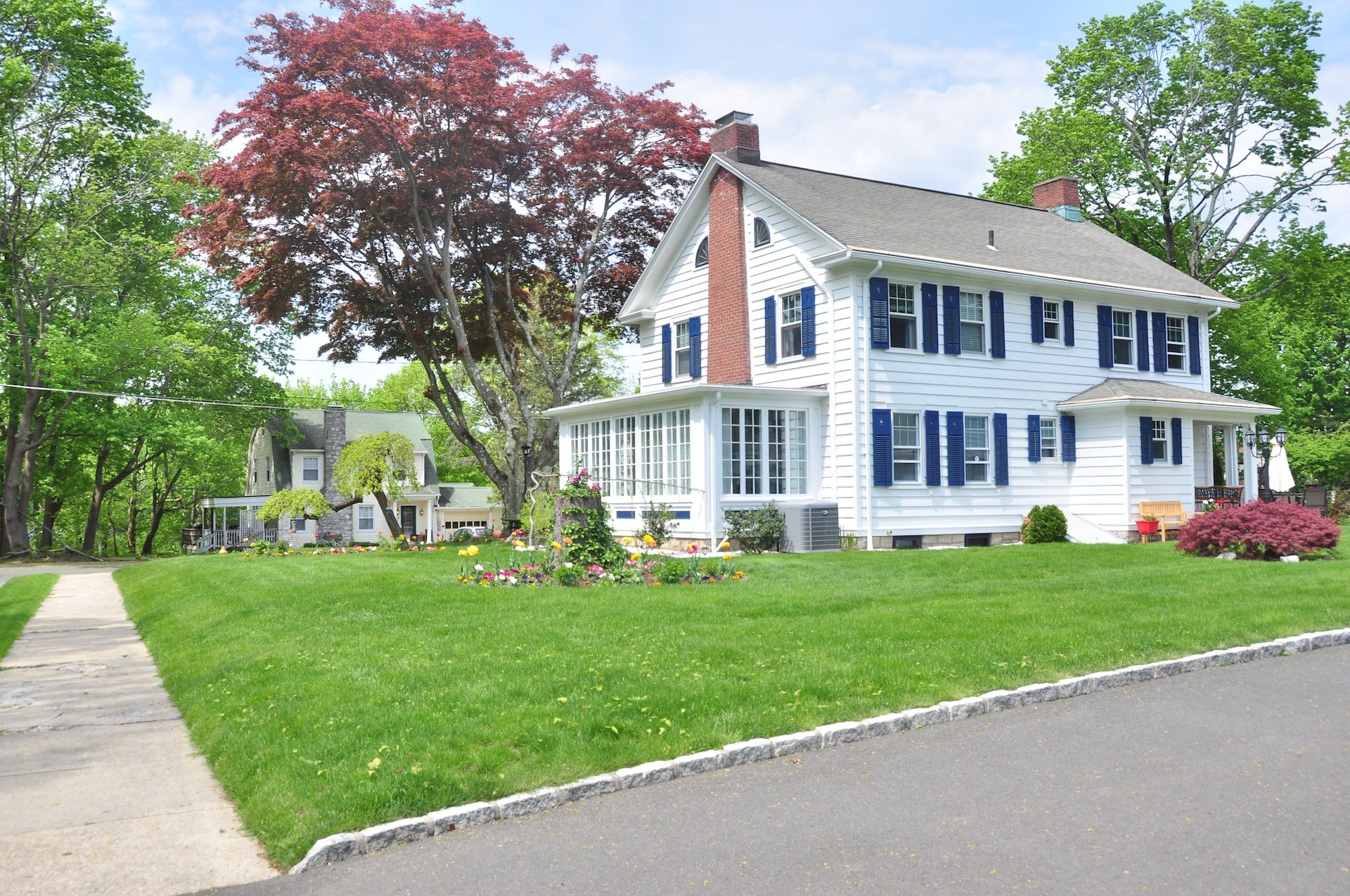
Deciding on the right roofing material for your home can feel like solving a puzzle. Every roof, with its unique design and structure, demands careful consideration. Do you have a steep slope or low slope roof? These distinct roof types need specific materials to ensure they function at their best.
Our family at RoofCrafters has encountered a myriad of roofing challenges over the past three decades. We've seen it all and helped provide our clients with solutions. From steep slopes that command special flashing attention. To low-slope roofs that need special insulation for drainage. What really sets a roof apart is the material. Understanding the differences between each is key!
In this article, we dive into steep and low-slope roofs. Our goal? To arm you with the knowledge to make an informed decision about the best material for your roof. Whether it’s the charm of a steep slope or the subtlety of a low slope, understanding the right material for your roof type is crucial. By the end, you'll grasp the differences between steep and low-slope roofs and know which materials are the perfect match for each. Let’s explore the options and find the perfect fit for your rooftop!
Understanding Steep Slope Roofs: Definition and Characteristics
You might not consider yourself a roofing expert, but understanding the basics of roof types can be both interesting and useful. These roof types often need a different approach to getting the best solution. So, let’s start with a steep slope, shall we?
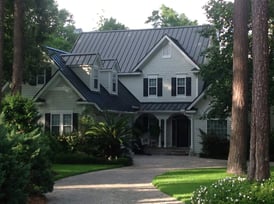
A steep slope roof is what you most frequently tend to see around your neighborhood, and is pretty much the standard for most residential areas. Both steep and low-slope roofs are classified by their pitch. The roof pitch is simply the steepness of your roof expressed by how many inches the roof rises for every 12 inches in depth. That being said, steep slope roofs have a pitch of no less than 18:12 degrees. Keep an eye out in your neighborhood, and you'll start to notice the beauty and functionality of steep slope roofs all around you!
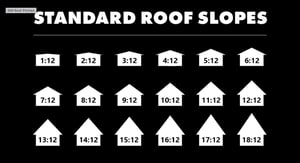
Exploring Low-Slope Roofs: Characteristics and Uses
Steep slope roofs dominate residential neighborhoods. Yet low-slope roofs offer a different kind of architectural appeal. Characterized by a subtle, almost flat appearance, low-slope roofs have a pitch ranging from 0 to 3:12. This means for every 12 inches horizontally, the roof rises 0 to 3 inches — a gentle incline indeed.
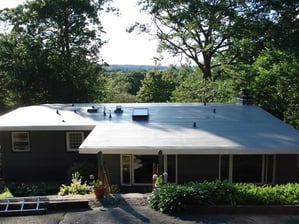
You might spot low-slope roofs in specific areas. These areas include carports and front porch coverings in residential settings. (Installing a low-slope roof on the entirety of a home is not as common) Low-slope roofs often extend from the main structure. Their subtle slope creates an unobtrusive yet functional design, perfect for these extensions.
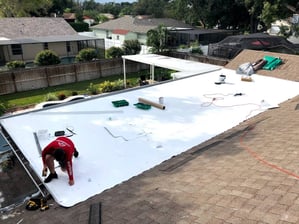
However, the real domain of low-slope roofs is the commercial and industrial sectors. These structures often need vast roof areas. The low-slope design becomes not only practical but also cost-effective. The sleek look of these roofs can add a modern touch to commercial buildings. They combine aesthetics with functionality. Keep an eye out for these understated yet efficient roofing styles in larger buildings around you!
Selecting the Right Material for Your Roof Type
Choosing the right roofing material is crucial. It ensures both aesthetic appeal and long-lasting functionality. For homeowners with steep slope roofs, a variety of materials can be an excellent fit.
Here are some of the most popular steep slope roof options:
- Asphalt Shingles: Often used due to their affordability and versatility. Asphalt shingles are a go-to for many homeowners.
- Clay or Concrete Tiles: Offering a unique aesthetic, these tiles are durable and well-suited for steep slope roofs.
- Metal Roofing: Known for its durability and energy efficiency, metal roofing is a long-lasting option.
- Slate: A high-end choice, slate roofing offers a natural look with incredible longevity.
- Wood Shakes: For a classic, rustic appearance, wood shakes provide a distinct aesthetic with good durability.
For those with low-slope roofs, the material choices differ. They focus more on waterproofing and durability. Here are common choices for low-slope roofs:
- Modified Bitumen: Available in self-adhering or torch-down applications. This material is known for its durability and waterproofing capabilities.
- TPO (Thermoplastic Polyolefin): A popular choice for commercial roofs. TPO is energy-efficient and resilient.
- PVC (Polyvinyl Chloride): This membrane offers excellent waterproofing and is resistant to chemical exposure.
- Metal Panels: Suitable for both steep and low-slope roofs, metal panels provide durability and a modern look.
Choosing the right material is important. It's not just for aesthetic harmony with your home’s architecture. It's also for ensuring the roof performs optimally under the specific challenges posed by its slope. Whether your home boasts a steep or a low-slope roof, there’s a material suited to protect and enhance it.
Benefits of Choosing Asphalt Shingles for Steep Slope Roofs
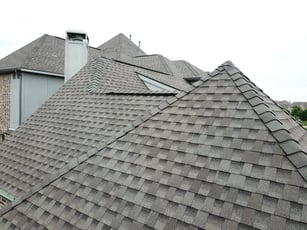
Asphalt shingles are a type of waterproof roofing material. They’re relatively inexpensive cost in addition to their longevity and durability making them a popular choice. Asphalt shingles are made up of a base mat on the bottom, a layer of waterproof asphalt in the middle, and ceramic granules on top. Shingles are a perfect choice for a steep slope roof and will function well on this structure.
Asphalt shingles are a type of waterproof roofing material. They’re relatively inexpensive cost in addition to their longevity and durability making them a popular choice. These shingles are made up of a base mat on the bottom, a layer of waterproof asphalt in the middle, and ceramic granules on top. Shingles are a perfect choice for a steep slope roof and will function well on this structure.Asphalt shingles are a type of waterproof roofing material. They’re relatively inexpensive cost in addition to their longevity and durability making them a popular choice. These shingles are made up of a base mat on the bottom, a layer of waterproof asphalt in the middle, and ceramic granules on top. Shingles are a perfect choice for a steep slope roof and will function well on this structure.
Advantages of Using Clay or Concrete Tiles on Steep Slope Roofs
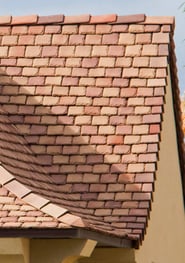
Clay and concrete tiles are not only a highly aesthetically-pleasing roofing option for many homeowners but a great option for those of you facing the brunt of this hurricane season. These tiles come in a variety of types customized to match the architecture of your home and are a popular choice amongst upscale communities. As for the type of roof this material works best on, a steep slope is your guy.
Versatility of Metal Roofing for Both Steep and Low Slope Roofs
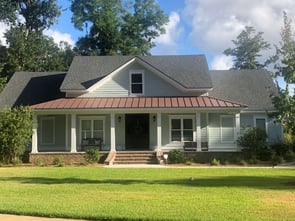
Metal roofing are sleek, aesthetically pleasing, and offer great curb appeal potential for your home. Metal can be installed on both steep and low slope roofs, here’s how: On a steep slope roof, metal can cover your entire home. However, if you have a low slope roof with an extending carport or porch area, metal panels can be installed to add a pop of style to these flatter surfaces.
Slate Tiles for Steep Slope Roofs
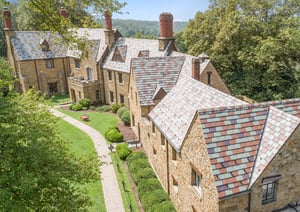
Slate tiles are naturally beautiful and have a longer lifespan compared to many other roofing materials. Slate roofs come with a lifetime warranty, and are made from high-quality metamorphic rock. They can last you well past 100 years with proper maintenance. They also come in a synthetic slate material, which comes with a 50 year manufacturer warranty. Slate tiles pair best with a steep slope roof.
Wood Shakes for Steep Slope Roofs
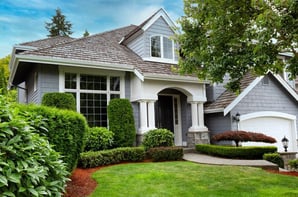
Wood shakes offer a unique, rustic charm for steep slope roofs. These shingles are crafted from split logs, providing a distinct, natural appearance. Ideal for steep slope roofs, wood shakes blend durability with aesthetic appeal, creating a timeless look that enhances the character of your home.
Granule Surface Modified Bitumen Low-Slope Roofing
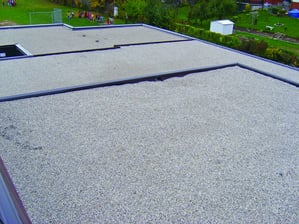
Self-adhering or torch applied modified bitumen is a roofing material made of bituminous membranes that provide an effective, long-lasting system when applied to a low-slope roof. We would typically install mod-bit on low-slope roofs that are still visible from the street or backyard. With the granule surface they provide a better curb appeal than a single-ply roof such as TPO or PVC.
TPO and PVC Single-Ply Low-Slope Roofing
TPO is a single-ply roofing membrane and is one of the fastest-growing roofing materials on the market. This material is made up of a layer of synthetic, reinforcing material that is used to cover your low-slope roof. It's like having a pool liner on your roof.
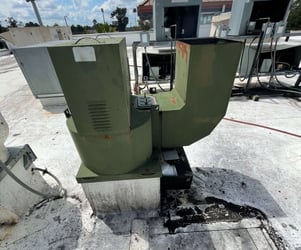
Like TPO, PVC is a single-ply roofing material. It’s made from a low percentage of petroleum and oil and is a great addition to a low-sloping roof. It's best used on restaurants and commercial applications where chemicals and grease get on the roof. PVC cost a little more but will not deteriorate under these conditions.
Selecting the Right Roofing Material for Your Home's Roof Type
Whether you have a steep slope roof or a low slope roof, you now understand the different types of materials that can and should be used on your roof. If you were to install asphalt shingles that are primarily used on a steep slope roof onto a low slope roof, you’d be met with many issues.
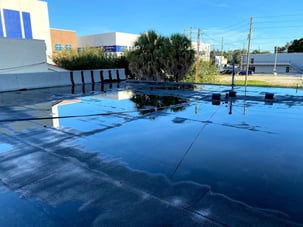
These problems could range from:
- Pooling water after storms
- Accumulated debris
- Unnecessary added weight
- Leaks
And that’s just shingles. Be sure to use the appropriate materials on your steep or low-slope roof, and you’ll avoid any potential problems.
Making the Smart Choice for Your Roof
So, you've learned a lot about roofs, right? Whether you have a steep or low-slope roof, picking the right material is really important. You don't want to end up with problems like leaks or water sitting on your roof after a storm.
Think about all the options we talked about. Each one works best for a certain type of roof. If you're still not sure which one to choose, that's okay. A good idea is to talk to a roofing expert. They know all about different roofs and can help you pick the best one for your home. Remember, picking the right roof material means your house will not only look great but also be safe and strong for a long time. Need more tips or help with your roof?
You can also check out our other articles in our learning center where our family at RoofCrafters shares 3 decades of experience. We're always here to help you out! If you believe your steep or low slope roof currently has improper materials installed, and you’re suffering roof leaks and other unsightly issues, as a result, schedule an inspection below.
My name is Mitch, and I have over 10 years of roofing experience. I enjoy my career in the service industry because I love helping others take care of their homes and businesses. With over 10 years in the roofing industry, my success comes from my honesty and integrity during my roof inspections. I do my best to listen to the needs of my clients and strive to provide an awesome client experience.




